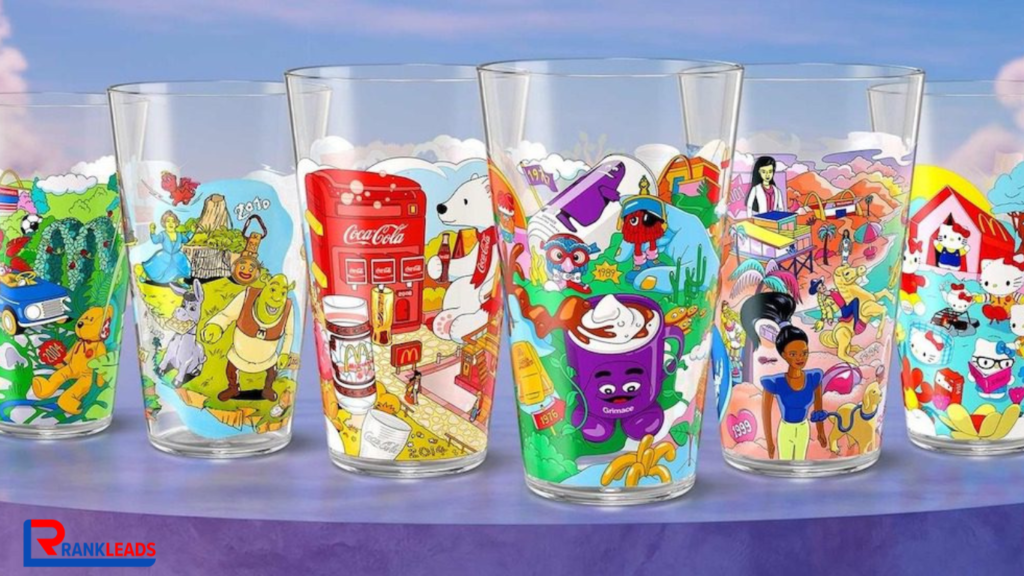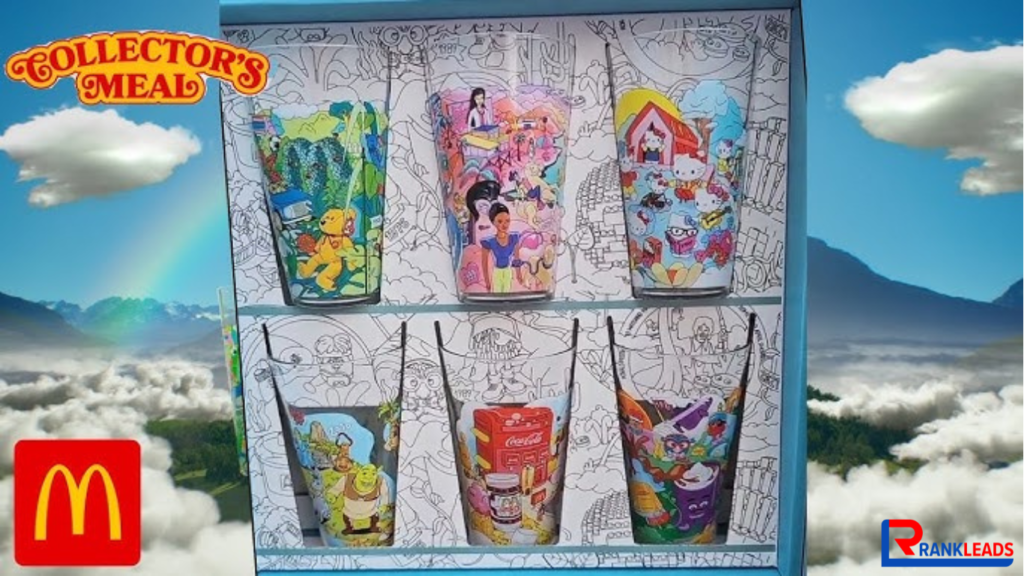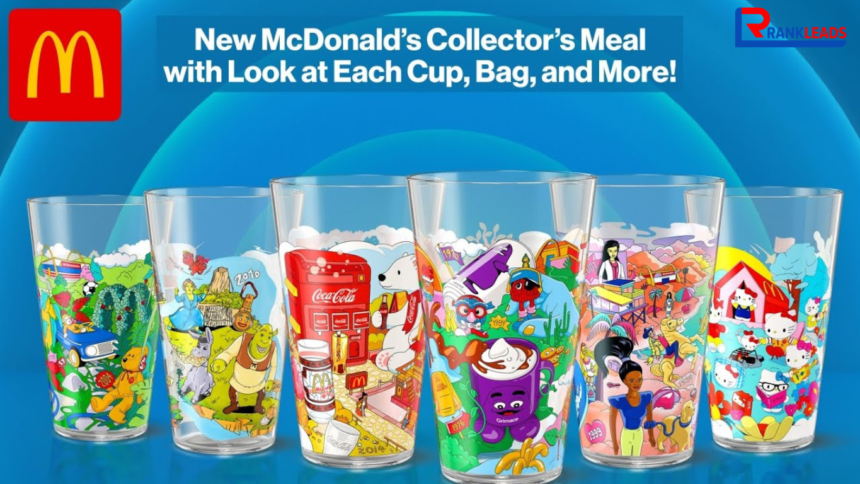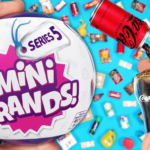McDonald’s has long been more than just a fast-food giant; it’s a cultural phenomenon. From its iconic Big Mac to its Happy Meals, the brand is deeply woven into the fabric of everyday life. One aspect of McDonald’s that has captured the hearts of fans for decades is its McDonalds collector cups. These collectible items, often adorned with unique designs, movie characters, and cultural themes, are not just drinking vessels but treasured pieces of history for many enthusiasts. This article delves into the history, appeal, and value of McDonald’s collector cups, exploring why they continue to hold a special place in the hearts of fans around the world.
The Origin of McDonald’s Collector Cups
McDonald’s collector cups first made their appearance in the 1970s, a time when fast-food promotions were becoming increasingly creative. These cups were part of a broader marketing strategy aimed at drawing in families and encouraging repeat visits. Early designs were often simple, featuring the McDonald’s logo or Ronald McDonald and his friends. However, as the years passed, the designs became more intricate and tied to pop culture phenomena, making them highly sought after by collectors.
One of the earliest and most iconic series of McDonalds collector cups featured the characters from “The Flintstones.” Released in conjunction with the popular animated TV show, these cups became an instant hit. Over time, McDonald’s began collaborating with blockbuster movies, sports events, and even global cultural movements, cementing the collector cups as more than just promotional items.

Why Are McDonald’s Collector Cups So Popular?
The enduring appeal of McDonald’s collector cups lies in their ability to evoke nostalgia and provide a tangible connection to cherished memories. For many people, these cups symbolize childhood trips to McDonald’s, family gatherings, or a special moment shared over a meal. The vibrant designs and limited-edition releases make them highly desirable.
Moreover, McDonald’s has a knack for tapping into cultural zeitgeists. Whether it’s a tie-in with a summer blockbuster like “Star Wars” or “Jurassic Park,” or a celebration of a major sporting event, McDonald’s collector cups often reflect the pop culture of their time. This connection to larger cultural moments makes them appealing to both casual fans and serious collectors.
The Role of Pop Culture in McDonald’s Collector Cups
Pop culture has played a significant role in shaping the themes and designs of McDonald’s collector cups. In the 1980s and 1990s, McDonald’s partnered with major film studios to release cups featuring characters from blockbuster movies. Some of the most memorable collaborations include the “Batman Forever” series and “The Lion King” cups, which were adorned with stunning artwork and vibrant colors.
These cups weren’t just promotional items; they were also a way for fans to bring a piece of their favorite movies home. The synergy between McDonald’s and pop culture ensured that the cups were more than just disposable items—they became treasured keepsakes. Today, these cups are cherished by fans who see them as relics of a bygone era.
The Value of McDonald’s Collector Cups
For collectors, the value of McDonald’s collector cups extends beyond monetary worth. While some rare cups can fetch high prices on auction sites, their true value often lies in the sentimental attachment they hold. However, for those looking to buy or sell, factors like rarity, condition, and design play a crucial role in determining a cup’s market value.
Limited-edition releases and collaborations with iconic franchises tend to be the most valuable. For instance, the “Star Wars” series of cups released in the late 1990s are highly coveted by both McDonald’s fans and “Star Wars” enthusiasts. Similarly, cups from the 1970s and 1980s, which are harder to find in good condition, can command impressive prices among collectors.
How to Start Your Own McDonald’s Collector Cup Collection
Starting a collection of McDonald’s collector cups can be an exciting and rewarding hobby. Here are some tips to get you started:
Research: Familiarize yourself with the different series and designs of McDonald’s collector cups. Online forums and collector websites are excellent resources for information.
Set a Budget: Decide how much you’re willing to spend on your collection. While some cups are affordable, others can be quite expensive.
Visit Auctions and Thrift Stores: Many collectors find rare cups at local thrift stores, garage sales, or online auctions. Keep an eye out for good deals.
Join Collector Communities: Connecting with other enthusiasts can help you learn more about the hobby and find opportunities to trade or purchase cups.
Preserve Your Collection: To maintain the value and appearance of your cups, store them in a cool, dry place and handle them with care.
Famous McDonald’s Collector Cup Series
Over the years, McDonald’s has released numerous memorable series of collector cups. Some of the most famous include:
- Star Wars Cups: These cups, released in the late 1990s, featured iconic characters and scenes from the “Star Wars” franchise. They remain some of the most sought-after collector items.
- Batman Forever Series: Released in 1995, these cups were notable for their bold designs and 3D artwork.
- Disney Classics: McDonald’s has partnered with Disney multiple times to create cups featuring beloved characters from “The Little Mermaid,” “Aladdin,” and “Beauty and the Beast.”
- Olympics Series: In celebration of various Olympic Games, McDonald’s released cups showcasing athletes and events, tying into the global excitement.
- Coca-Cola Glasses: Although technically not cups, these glassware items have been a popular addition to McDonald’s promotional lineup.
Sustainability and McDonald’s Collector Cups
In recent years, McDonald’s has made efforts to align its promotional items with its sustainability goals. While the classic McDonald’s collector cups were often made from plastic, the company has started exploring more eco-friendly materials. This shift reflects McDonald’s commitment to reducing its environmental impact while continuing to provide fans with collectible items.
For collectors, this change presents an interesting dynamic. Eco-friendly materials may affect the durability and long-term preservation of the cups, but they also represent a modern era of McDonald’s history.

FAQs About McDonald’s Collector Cups
1. Are McDonald’s collector cups valuable?
The value of McDonald’s collector cups depends on factors like rarity, design, and condition. Some rare and vintage cups can fetch high prices among collectors, but their true value often lies in sentimental memories.
2. How can I tell if a McDonald’s collector cup is authentic?
Authentic McDonald’s collector cups usually have clear branding and markings that indicate their release year and series. Researching the specific design can also help verify authenticity.
3. What are the rarest McDonald’s collector cups?
Some of the rarest cups include the “Star Wars” series from the late 1990s and vintage cups from the 1970s. Limited-edition releases tied to major events or movies also tend to be rare and valuable.
4. How should I care for my McDonald’s collector cups?
To preserve your cups, store them in a cool, dry place away from direct sunlight. Clean them gently with mild soap and water, avoiding harsh chemicals or abrasive scrubbing.
5. Where can I buy McDonald’s collector cups?
McDonald’s collector cups can often be found at thrift stores, garage sales, online auction sites like eBay, and collector forums. Joining a community of enthusiasts can also provide opportunities to trade or purchase items.
Conclusion
McDonalds collector cups are more than just promotional items; they’re cherished pieces of history that connect fans to fond memories and iconic cultural moments. Whether you’re a long-time enthusiast or a newcomer to the hobby, these cups offer a glimpse into the creativity and cultural impact of McDonald’s. From nostalgic childhood trips to collectible treasures, McDonald’s collector cups hold a timeless appeal that continues to captivate fans worldwide.








